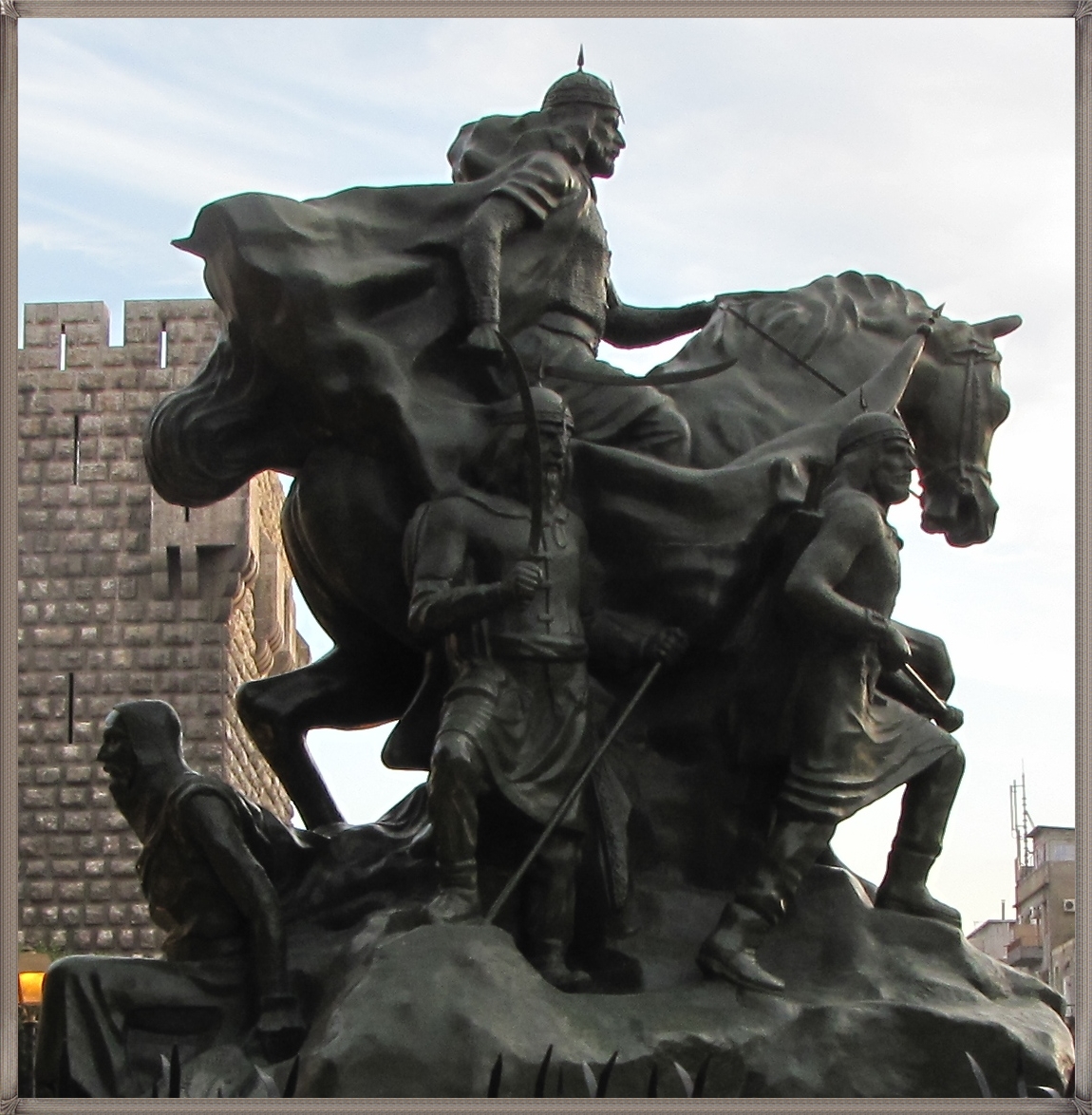In Memory Of Salah al-Din Yusuf ibn Ayyub
 |
| Salah al-Din statue in Damascus |
 |
| Placard at the gate of Al Ayyubi's Mausoleum in Damascus |
 |
| Omayyad Mosque in Damascus |
Salah al-Din's Tomb is located next to the northwestern corner of the Great Umayyad Mosque, in Damascus, Syria. Although Al Ayyubi died in AH 589 / AD 1193, he was initially interred at the Damascus Citadel until his son al-Malik al-Afdal Nur al-Din 'Ali, ruler of Damascus, completed the construction of the present mausoleum. Salah al-Din's body was transferred to its final resting place on the holy day of 'Ashura in AH 592 (AD 1195).
 |
| Salah al-Din's Mausoleum next to Umayyad Mosque in Damascus |
Soon afterwards, Salah al-Din's other son, al-Malik al-Aziz ‘Uthman (‘Uthman II), ruler of Egypt, decided to construct a madrasa attached to his father's tomb. Al Ayybi's Mausoleum is also known as Al Madrasa al-'Aziziyya. Situated adjacent to the Umayyad Mosque, the Mausoleum is recognisable by it's distinctive red dome. When we visited the Mausoleum, some renovation was going on outside.
 |
| Al Ayyubi's Mausoleum next to the Umayyad Mosque in Damascus |
The tomb chamber occupies the southwest corner of the building. A chamber used for Qur'anic recitation is accessible from its east side and a series of five smaller rooms are found along the north side. As for the building's exterior and its connection to the Al Madrasa al-'Aziziyya, little of its original architecture has survived to modern times.
 |
| Empty white marble sarcophagus was a gift from the German Emperor William II |
In the middle of a domed chamber lie two coffins: a white marble sarcophagus - when you enter, on the left - was a gift from the German Emperor William II, on the occasion of his visit to Damascus in 1903. Next to it is the original wooden burial tomb, covered in green with inscriptions - where Salah Al Din's body is; a masterpiece of the linear interplay typical of Ayyubid woodworking. It is decorated with geometric and astral patterns as well as floral and vegetal motifs.
 |
| The real coffin of Salah al-Din Yusuf ibn Ayyub next to the empty coffin |
 |
| Inside Salah al-Din Yusuf ibn Ayyub's Mausoleum |
+ More on Salah al-Din Yusuf ibn Ayyub
+ The Magnanimity of Salah al Din
+ More on Salah al-Din Yusuf ibn Ayyub
+ More on Salah al-Din Yusuf ibn Ayyub
+ More on Salah al-Din Yusuf ibn Ayyub
+ More on Salah al-Din Yusuf ibn Ayyub
+ More on Salah al-Din Yusuf ibn Ayyub
+ More on Salah al-Din Yusuf ibn Ayyub

